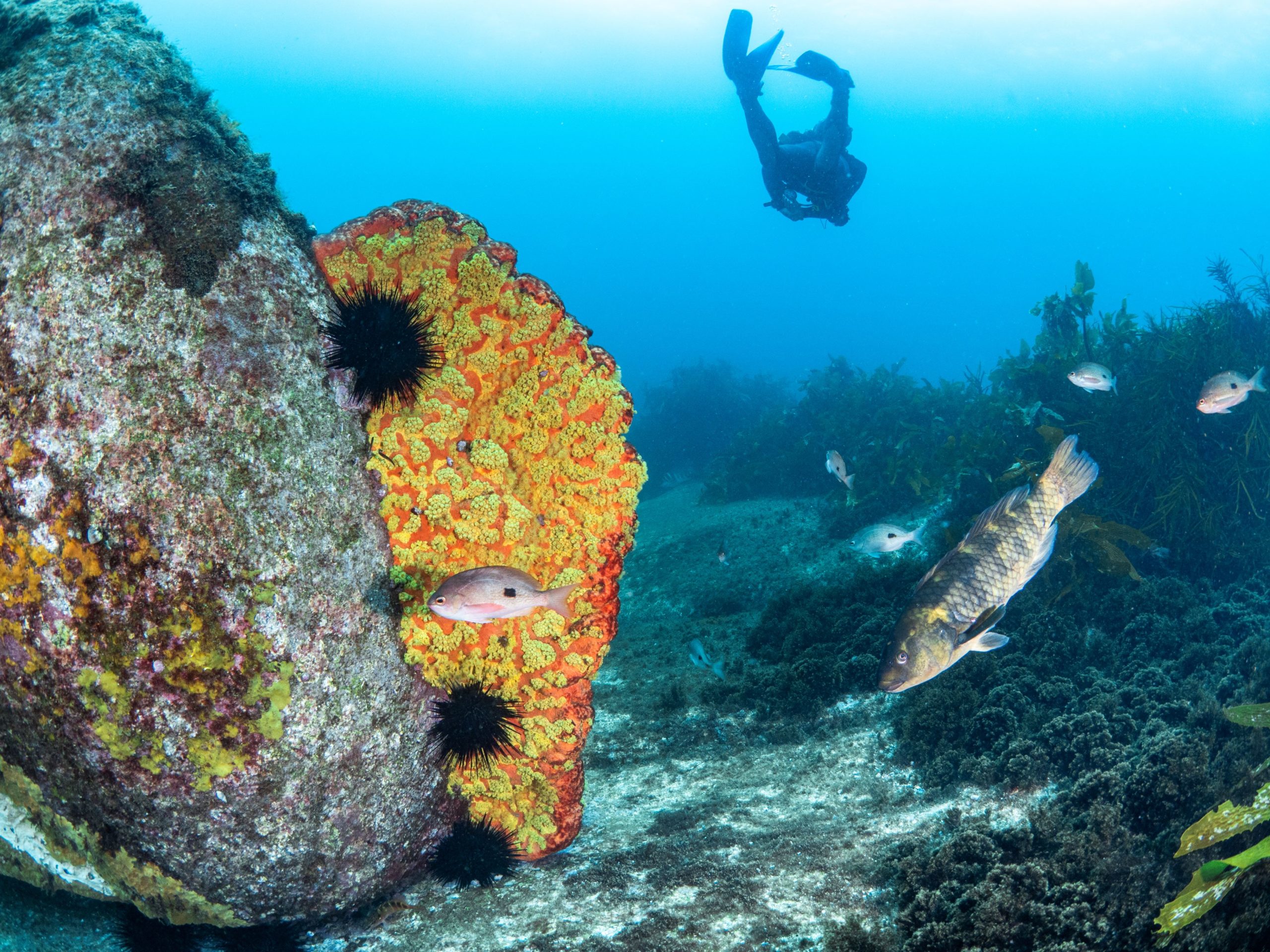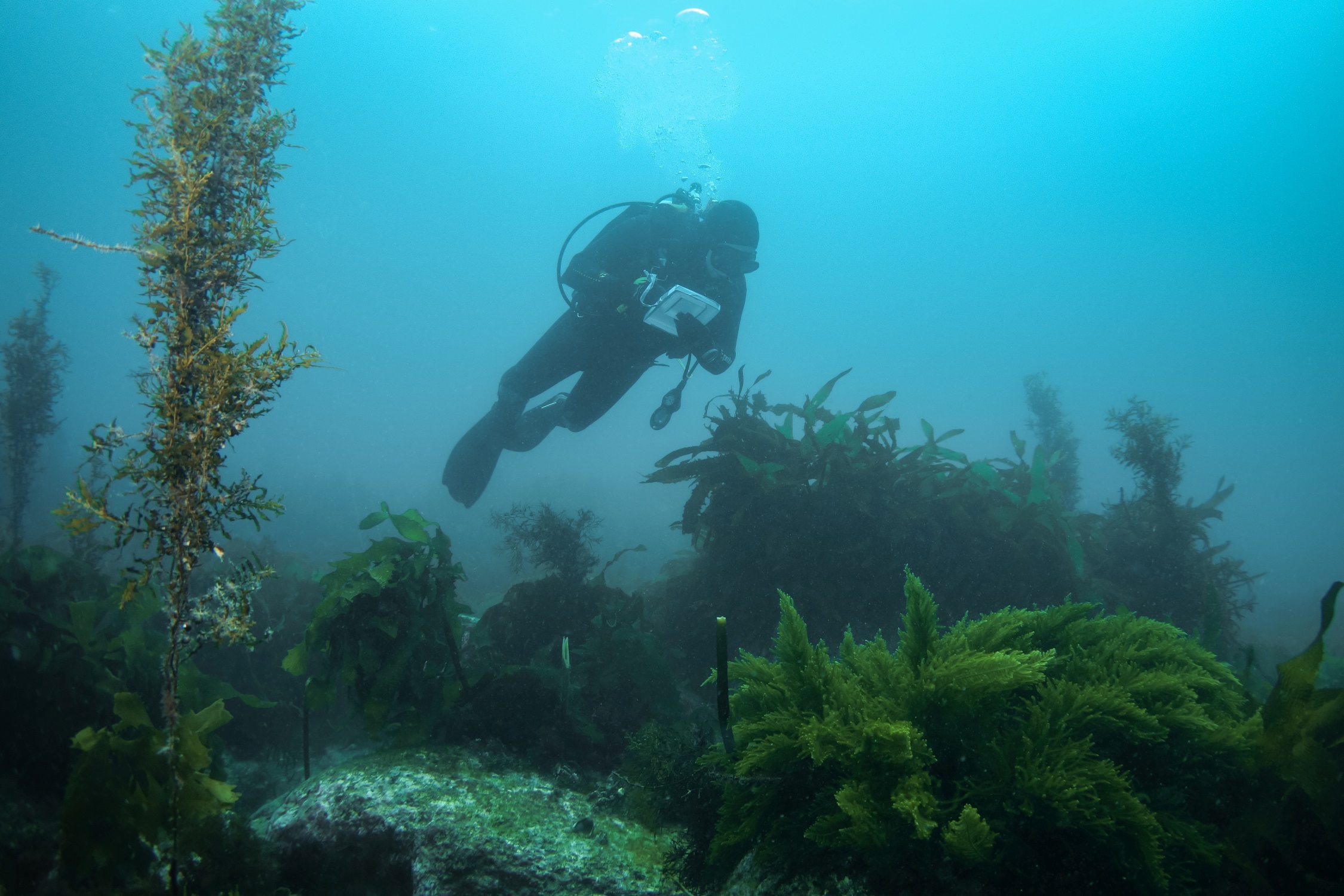Ecosystem and Habitat Interactions

Credit: Matt Testoni
By-Catch
There is no by-catch in this fishery as urchins are harvested by hand.
Threatened, Endangered or Protected Species Interactions (TEPs)
Interactions with protected species and the vessel or dive gear are possible although the same gear has been assessed as negligible risk in abalone fishing. Handfish ranges potentially overlap with the urchin fishery with interaction considered positive because urchin harvesting reduces the risk of change in the reef ecosystem.
Habitat Interaction
Interaction between the habitat and fishery is limited to catch bags and considered negligible risk.
Ecological Role of Urchins
Researchers at IMAS have been studying longspined sea urchins and their associated barrens for more than 17 years. Threshold densities of urchins greater than ~700g/m2 can have devastating impacts on Tasmania’s rocky reef ecosystems due to the overgrazing of kelp which can lead to the formation of extensive urchin barrens (Ling et al. 2015). Rocky reefs declining to the barren state is problematic because urchins can exist in a starvation state on an extensive barren for decades (Filbee-Dexter and Scheibling 2014). Therefore, to convert extensive barren back to kelp forest nearly all longspined urchins need to be removed – to an urchin density of <70g/m2 (Ling et al. 2009a, Filbee-Dexter and Scheibling 2017). Removal experiments, such as those conducted by Tracey et al. (2015) in Wineglass Bay, Tasmania, show that after targeted and systematic removals of urchin biomass kelp forests can recolonise on the reefs. The regrowth of kelp after a reduction in urchin density below a given threshold is a pattern that has been demonstrated repeatedly elsewhere in Australia and around the world (Keats et al. 1990, Leinaas and Christie 1996, Ling et al. 2015, Tracey et al. 2015, Kriegisch et al. 2016, Sanderson et al. 2016).

IMAS researcher conducting a transect survey.



